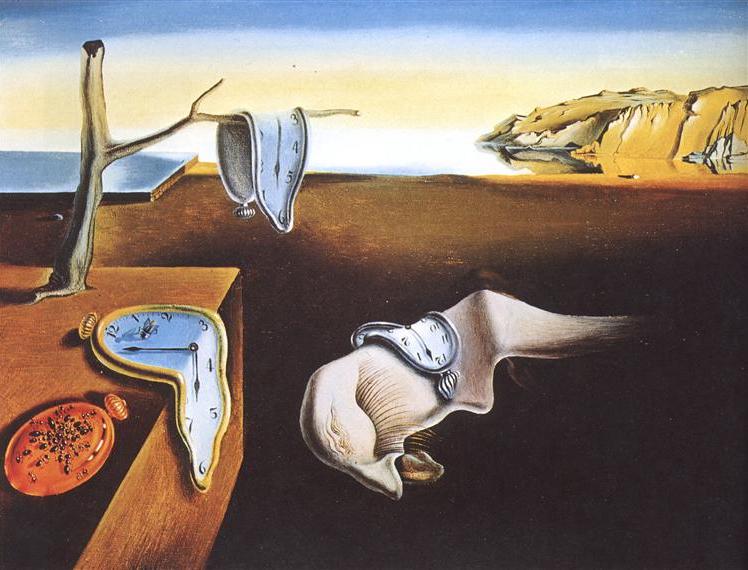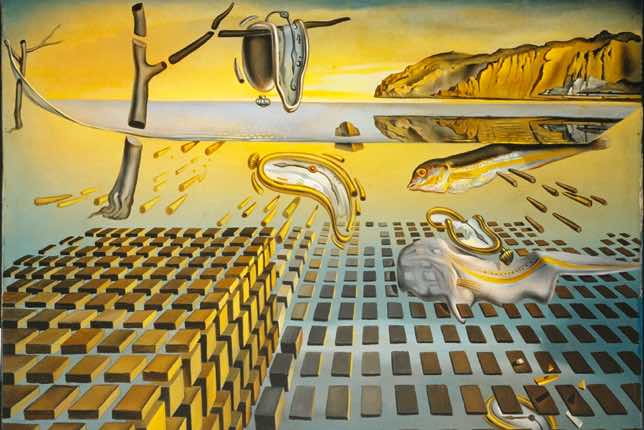Surrealist artist Salvador Dalí (1904-1989) is world-renowned for his enigmatic, disconcerting works that defy the laws of reality and logic. Among his most emblematic works, The Persistence of Memory (1931) stands out as an indisputable masterpiece of the Surrealist movement. Measuring just 24 x 33 cm, this oil-on-canvas painting is both a journey into the artist's unconscious and an exploration of the concepts of time, dreams and the nature of reality.
In this article, we delve into the mysterious world of The Persistence of Memory to understand the ideas, techniques and influence of this singular work in the history of art.

A brief introduction to Surrealism
Before exploring The Persistence of Memory in detail, it's essential to understand the artistic context in which Salvador Dalí evolved.
Surrealism is a twentieth-century artistic movement that emerged in reaction to the constraints of reality and logic.
Surrealists such as Salvador Dalí, André Breton and René Magritte sought to explore the recesses of the human unconscious through painting, literature and other forms of artistic expression. They created works that were enigmatic and disconcerting, challenging normality and embracing the irrational.
Surrealism opened the door to dreams, fantasies and bold artistic experimentation, leaving behind a legacy that continues to influence contemporary art and culture.
Also read: 6 things to know about Salvador Dalí
The work: an exploration of the strange and the sublime

The Persistence of Memory, Salvador Dalí, 1931
The Persistence of Memory is a fascinating visual representation of Salvador Dalí's unconscious.
The canvas features a desert landscape where soft watches, rocks and a tree are dissolved into an unreal environment. The deformed, dripping watches are the central element of the work, creating an atmosphere of distorted time and reality.
Three possible levels of interpretation
1. Time: the soft watches in the work symbolize the fluidity and relativity of time. Dalí challenges the linear notion of time by depicting clocks that seem to melt and bend, suggesting that time is not a fixed entity, but rather subjective and elastic.
2. The unconscious : The desert landscapes, troubled skies and amorphous shapes of the objects evoke the world of dreams and the unconscious. Dalí explores the idea that reality is malleable and that the unconscious can influence our perception of the world.
3. The fragility of reality: the tree that appears covered in clocks is a symbol of the fragility of reality. It reminds us that our understanding of the world is subject to distortion and alteration, just like the distorted watches.
The technique
Dalí uses innovative artistic techniques to create the hypnotic effect of The Persistence of Memory. His skillful use of oil paint allows for smooth transitions between shapes, making the objects appear to blend into one another.
Additionally, his mastery of perspective creates a feeling of depth in an unreal space.
A universal and timeless work
The Persistence of Memory by Salvador Dalí remains a captivating and mysterious work that transcends the boundaries of reality. She perfectly embodies the principles of surrealism by exploring the twists and turns of the unconscious and questioning our perception of time and reality.
This iconic Dalí painting which has been housed at MoMA in New York since 1934 continues to inspire and fascinate art lovers and researchers, attesting to the power of art to challenge conventions and expand our understanding of the world. Ultimately, The Persistence of Memory remains an invitation to explore the deepest recesses of our minds and to question the very nature of our reality.
Influence and posterity
The Persistence of Memory by Salvador Dalí has had a lasting impact on the world of art and culture. She opened new avenues for artistic expression and inspired many contemporary and later artists.
His exploration of the unconscious, time and reality continues to arouse the admiration and questions of spectators around the world.

The Disintegration of the persistence of memory, Salvador Dalí, 1952-1954
Between 1952 and 1954, Salvador Dalí reinterpreted his iconic work with the painting The Disintegration of the Persistence of Memory.
Things have changed a lot in 20 years, here the artist explores the theme of technological progress. The Spanish village of Portlligat is now flooded: "Everything is suspended in space without anything touching anything.". Pocket watches return to the state of simple molecules…
The artist sensitive to psychoanalysis then gives way to the Dalí of religion and nuclear physics. Heisenberg partly inspired this painting. The dramas of Hiroshima and Nagasaki that occurred a few years earlier also played an important role in its conception.




